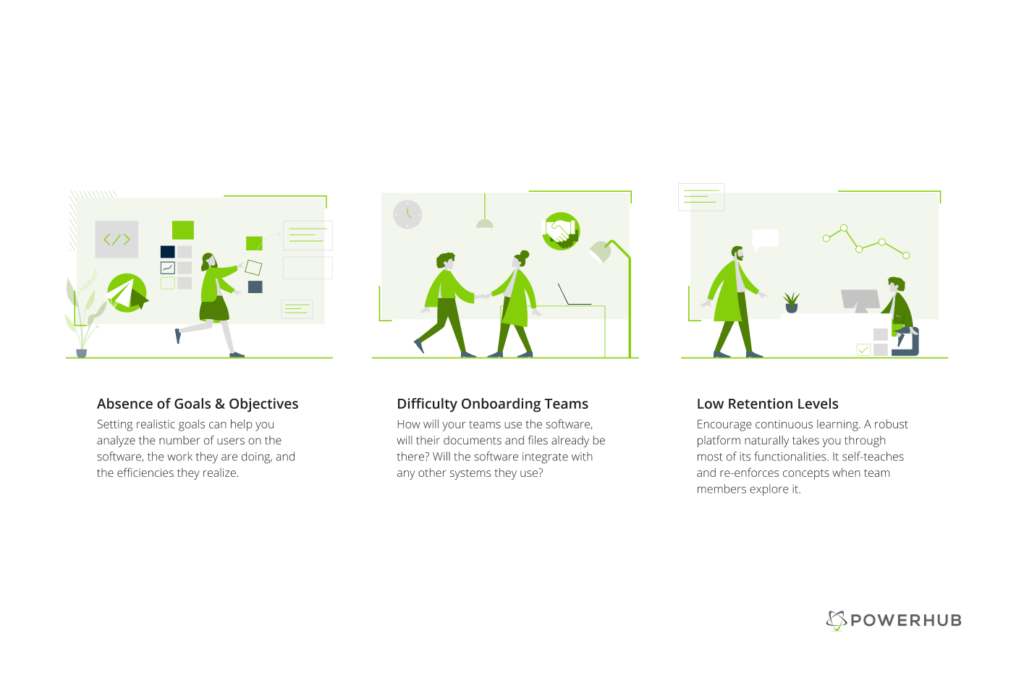You’ve helped choose a great renewable asset management software. It’s simple to use. But powerful to manage mega projects. You’ve communicated the why behind renewable energy management software adoption. And you’re super excited to get the ball rollin’ on a companywide implementation.
But you can’t shake off that feeling. That tiny voice in your head – warning you to think about the stumbling blocks, a.k.a. challenges, that you may face during rollout.
It’s not a myth.
Technology adoption sometimes poses a number of challenges that must be anticipated and thought of way before you’re in the thick of digitalizing your wind or solar asset management processes. Doing so helps you plan better and cater to concerns as they arise.
Top 3 Renewable Asset Management Software Adoption Challenges

Absence of Goals & Objectives
There’s nothing worse than not knowing how your asset management teams feel about a software. While it may take a push to get them to try out a digital platform if they’ve never used one, finding out if they’re making progress is crucial. This is why we’re such big fans of goal setting and tracking.
Setting realistic goals can help you analyze the number of users on the software, the work they are doing, and the efficiencies they realize. All this data contributes to valuable insights. And well, insights are fodder for crucial decision making that eventually tells you whether the software adoption strategy is working or not.
As we mentioned before, one of the five steps to successful software adoption is gathering feedback. Knowing how teams are doing, and then nurturing them with this feedback is crucial.
Difficulty Onboarding Teams
Let’s say you’ve invested time and resources into training your asset management teams to use the digital tool. Should your efforts end there? Not really. Another important aspect of renewable asset management software adoption is onboarding teams onto the platform.
How will your teams use the software, will their documents and files already be there? Will the software integrate with any other systems they use? Therefore, onboarding is as important as training, if not more, because it dictates how comfortable your employees are with the software.
Low Retention Levels
It’s a notorious fact – most people forget 70% of what they’ve learned in a training within 24 hours. This is why continuous learning should be an integral part of your renewable energy management software adoption plan.
Some continuous learning tools you can encourage your teams to use include detailed software guides. Moreover, a robust platform naturally takes you through most of its functionalities.
It self-teaches and re-enforces concepts when team members explore it. Additionally, internal champions that are ahead on the adoption curve can interact with others to answer queries and share positive feedback.
So, What Can You Do About It?
What can you do to minimize friction between the various stages of software adoption? Communicate. Talk. And explain. Having formal and informal communication channels encourages teams to open up about problems and discuss solutions that may help.
As a green energy, wind or solar, asset management company, adopting software is a great step towards efficiencies and paperless management. Which is why dealing proactively with the challenges that come in tow of this process is essential for smooth sailing ahead.




